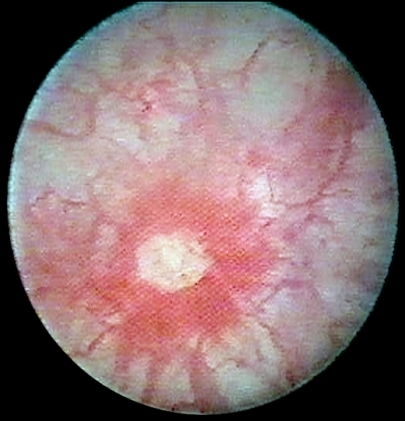Interstitial Cystitis

A rare non-infectious, chronic and most often progressive disease of the urinary bladder. It is characterized by varying combinations and extent of pain, urinary frequency (pollakisuria), nocturia and urgencyInterstitial cystitis (IC) has a broad intersection with Bladder Pain Syndrome (BPS) and Overactive Bladder (OAB).
Epidemiology
Prevalence of IC/BPS is approximately 1/200-2,000- for females and 1/2,450-12,500 for males. The prevalence of IC alone is less than 1/2,000. The estimated number of unreported cases might be much higher. Women are more affected than men (ratio 9:1).
Clinical description
IC is characterized by a permanent or intermittent unpleasant sensation (pain, pressure, bladder spasms) in the pelvic (or vulvar, suprapubic, pubic, vaginal, perineal, scrotal or urethral) region of more than 6 month duration, often with worsening during bladder filling. Limited bladder capacity is frequent but not a mandatory precondition. Frequency, nocturia and urgency are often associated with IC. Two types of IC can be distinguished: Hunner-Type and Non-Hunner-Type IC.
Etiology
The exact etiology of the disorder is unknown and might be multifactorial. Possible factors are urothelial alterations with an increased permeability of urine components, preceding infections (including history of bacterial cystitis), hormonal, vascular or neurological abnormalities, trauma, inflammation or autoimmune diseases. Other risk factors may include pelvic surgery, changes in microbiome, reduced microcirculation, histamine intolerance, dysfunction of the pelvic floor, endometriosis, genetic factors and psychological factors.
Diagnostic methods
IC is a diagnosis of exclusion. Diagnosis is based on the patient's history, questionnaires, pain protocol, bladder diary and physical examination including a pain mapping and urinalysis. Additional examinations include ultrasound, uroflowmetry, urethrocystoscopy, flow-electromyography and urodynamics, provocation tests (e.g. KCl test), hydrodistension of the bladder and bladder biopsy under anesthesia combined with a standardized counting for mast cells. A stool test may also helpful.
Differential diagnosis
Differential diagnoses include a long list of diseases of the musculoskeletal system and connective tissue, gastrointestinal diseases, gynecological diseases, neurological disorders, psychological disorders and urological diseases.
Management and treatment
Treatment is most often symptomatic, and ranges from non-invasive behavioral treatment to oral medication, complementary medicine, intravesical therapy (instillation), transurethral procedures, invasive / surgical interventions and rehabilitation measures. A phased approach is recommended and the therapy should be individualized. Cystectomy and urinary diversion is an ultima ratio, although with excellent results in pain control in patients with IC.
Prognosis
IC is a debilitating disease and extremely affects the quality of life including physical, psychological, domestic, social, sexual and occupational aspects. IC is a chronically-recurring or chronically-progressive disease. Most often IC results in a bladder with very low capacity, high frequency and intolerable pain.